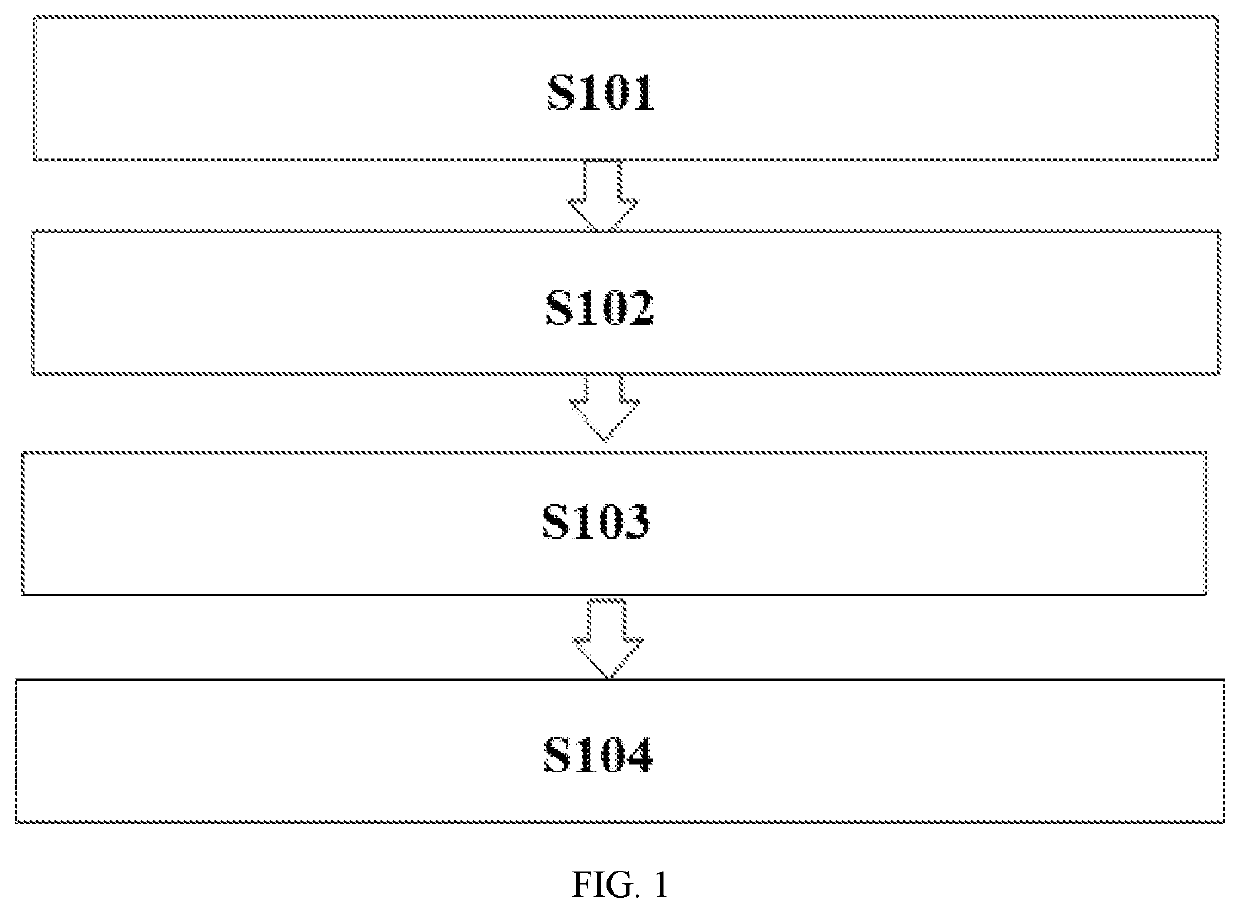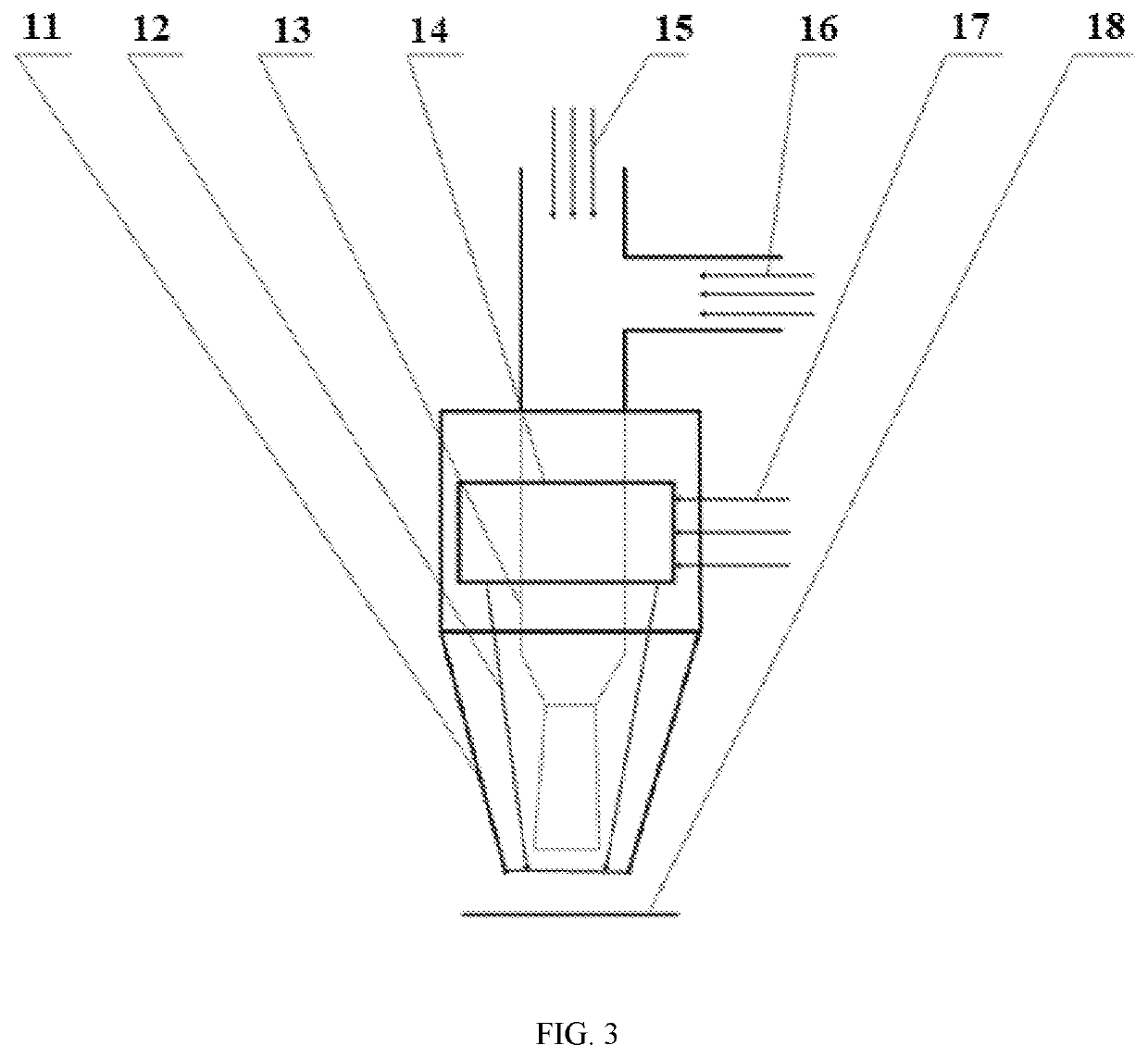Additive manufacturing method and device for ceramic and composite thereof
a technology of additive manufacturing and ceramic composites, which is applied in the direction of ceramic materials production, heat inorganic powder coating, metallic material coating process, etc., can solve the problems of low forming efficiency and energy/material utilization, high equipment investment and operating cost, and difficult to achieve full density
- Summary
- Abstract
- Description
- Claims
- Application Information
AI Technical Summary
Benefits of technology
Problems solved by technology
Method used
Image
Examples
example 1
[0047]According to the performance requirements of a superalloy part, a superalloy powder may be used for high-speed CS forming.
[0048]A forming substrate is heated to 900° C. to 1,000° C. by heating outside a spray chamber or heating inside the spray chamber with a heating coil. A high-speed CS gun is moved on the forming substrate to deposit the metal based on a digital additive forming path derived from a 3D CAD model of the part.
[0049]In the forming process, a heat source fixed beside the high-speed CS gun simultaneously heated a spray area to a temperature of 1,200° C. to 1,300° C., and a micro-roller fixed behind the high-speed CS gun moved with the gun to perform continuous cold rolling. In this way, high-speed CS forming and pressure forming (PF) are carried out simultaneously. If size and surface accuracies are not satisfactory, surface finishing is performed layer by layer or by several layers by a milling device in the synchronous forming process. Or, grinding and polishin...
example 2
[0051]According to the performance requirements of an aluminum alloy part, an aluminum alloy powder may be used for high-speed CS forming.
[0052]A forming substrate is heated to 600° C. to 800° C. by heating outside a spray chamber or heating inside the spray chamber with a heating coil. A high-speed CS gun is moved on the forming substrate to deposit the metal based on a digital additive forming path derived from a 3D CAD model of the part.
[0053]In the forming process, a heat source fixed beside the high-speed CS gun simultaneously heated a spray area to a temperature of 900° C. to 1,100° C., and a micro-roller fixed behind the high-speed CS gun moved with the gun to perform continuous cold rolling. In this way, high-speed CS forming and PF are carried out simultaneously. If size and surface accuracies are not satisfactory, surface finishing is performed layer by layer or by several layers by a milling device in the synchronous forming process. Or, grinding and polishing are perform...
example 3
[0055]According to the performance requirements of a ceramic part, a zirconia ceramic powder may be used for high-speed CS forming.
[0056]A forming substrate is heated to 900° C. to 1,100° C. by heating outside a spray chamber or heating inside the spray chamber with a heating coil. A high-speed CS gun is moved on the forming substrate to deposit the metal based on a digital additive forming path derived from a 3D CAD model of the part.
[0057]In the forming process, a first heating unit fixed beside the high-speed CS gun simultaneously heated a spray area to a temperature of 1,000° C. to 1,200° C., and a micro-roller fixed behind the high-speed CS gun moved with the gun to perform continuous cold rolling. In this way, high-speed CS forming and PF are carried out simultaneously. If size and surface accuracies are not satisfactory, surface finishing is performed layer by layer or by several layers by a milling device in the synchronous forming process. Or, grinding and polishing are per...
PUM
| Property | Measurement | Unit |
|---|---|---|
| melting point | aaaaa | aaaaa |
| temperature | aaaaa | aaaaa |
| temperature | aaaaa | aaaaa |
Abstract
Description
Claims
Application Information
 Login to View More
Login to View More - R&D
- Intellectual Property
- Life Sciences
- Materials
- Tech Scout
- Unparalleled Data Quality
- Higher Quality Content
- 60% Fewer Hallucinations
Browse by: Latest US Patents, China's latest patents, Technical Efficacy Thesaurus, Application Domain, Technology Topic, Popular Technical Reports.
© 2025 PatSnap. All rights reserved.Legal|Privacy policy|Modern Slavery Act Transparency Statement|Sitemap|About US| Contact US: help@patsnap.com



